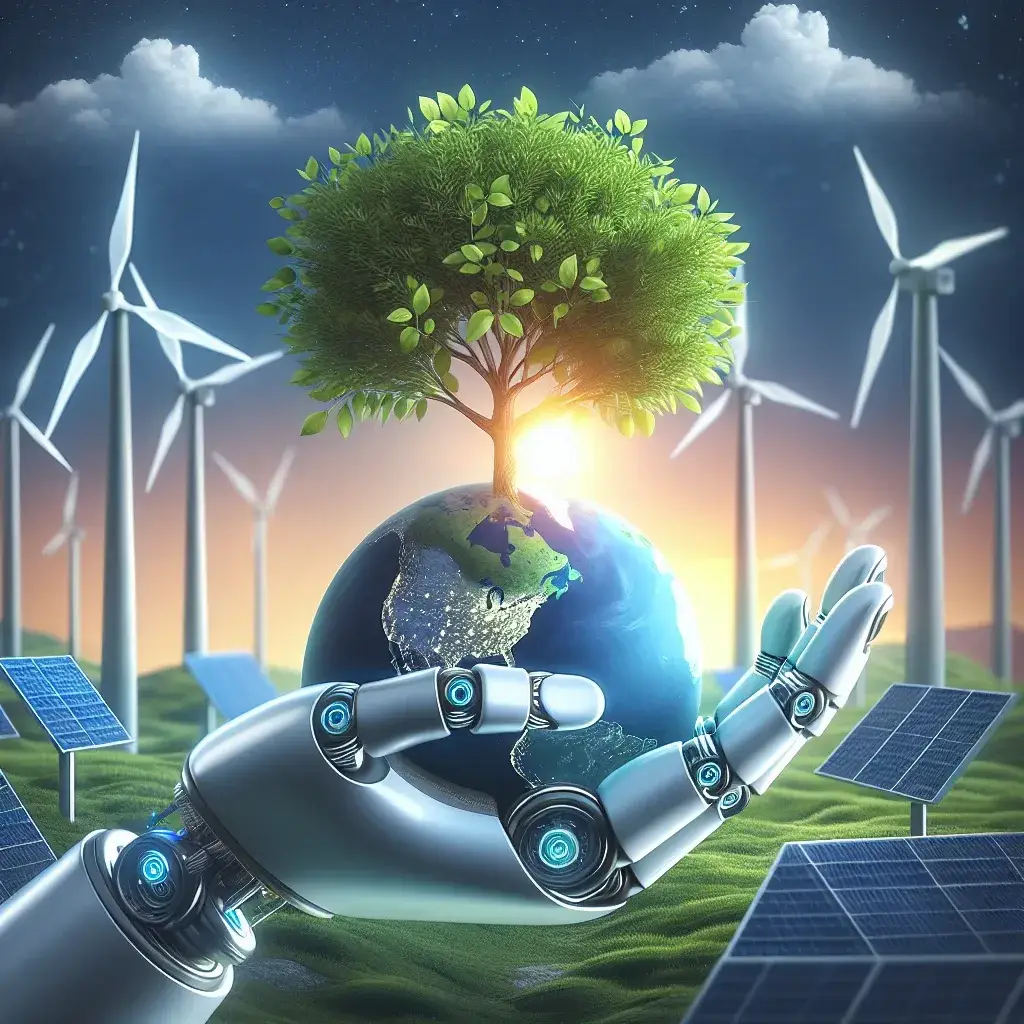Introduction to AI’s Role in Environmental Sustainability
In an era where climate change poses an unprecedented threat to our planet, artificial intelligence (AI) has emerged as a powerful tool in the battle against carbon emissions. This transformative technology is revolutionizing how we approach environmental sustainability, offering innovative solutions to reduce our carbon footprint and combat climate change effectively.
Understanding AI’s Impact on Carbon Emission Reduction
Artificial intelligence is making significant strides in various sectors to reduce carbon emissions through smart optimization, predictive analytics, and automated decision-making processes. The technology’s ability to process vast amounts of data and identify patterns makes it an invaluable asset in the fight against climate change.
Smart Grid Management and Energy Optimization
One of the most promising applications of AI in carbon reduction lies in smart grid management:
- Predictive Load Balancing: AI algorithms optimize electricity distribution by predicting peak demand periods and adjusting supply accordingly.
- Energy Storage Optimization: Machine learning models determine the most efficient ways to store and distribute renewable energy.
- Grid Stability: AI systems maintain grid stability while integrating variable renewable energy sources.
Industrial Process Optimization
In the industrial sector, AI is transforming manufacturing processes to reduce carbon emissions:
- Energy Efficiency: AI-powered systems optimize energy consumption in manufacturing facilities.
- Waste Reduction: Machine learning algorithms minimize waste production and improve resource utilization.
- Process Automation: Smart systems automate industrial processes for maximum efficiency and minimal environmental impact.
AI in Renewable Energy Development
Artificial intelligence is accelerating the adoption and efficiency of renewable energy sources:
Solar and Wind Power Optimization
- Weather Forecasting: AI improves renewable energy generation through accurate weather predictions.
- Equipment Maintenance: Predictive maintenance algorithms optimize renewable energy infrastructure performance.
- Resource Planning: Machine learning models help determine optimal locations for renewable energy installations.
Transportation and Logistics Optimization
The transportation sector benefits significantly from AI-driven solutions:
- Route Optimization: AI algorithms reduce fuel consumption by planning efficient delivery routes.
- Traffic Management: Smart traffic systems reduce congestion and vehicle emissions.
- Electric Vehicle Integration: AI optimizes charging infrastructure and battery management systems.
Building Energy Management
AI technologies are revolutionizing building energy efficiency:
- Smart HVAC Systems: AI-controlled heating and cooling systems reduce energy waste.
- Occupancy-Based Controls: Intelligent systems adjust energy usage based on building occupancy.
- Predictive Maintenance: AI identifies potential energy inefficiencies before they become problems.
Carbon Capture and Storage Optimization
AI is enhancing carbon capture and storage technologies:
- Capture Efficiency: Machine learning improves the efficiency of carbon capture processes.
- Storage Site Selection: AI analyzes geological data to identify optimal carbon storage locations.
- Monitoring and Safety: Advanced algorithms ensure safe and efficient carbon storage operations.
Agriculture and Forestry Management
AI applications in agriculture and forestry contribute to carbon reduction:
- Precision Agriculture: AI optimizes farming practices to reduce emissions and improve soil carbon sequestration.
- Forest Management: Machine learning aids in forest conservation and reforestation efforts.
- Crop Yield Optimization: AI helps maximize crop yields while minimizing environmental impact.
Future Prospects and Challenges
The future of AI in carbon emission reduction holds great promise:
- Emerging Technologies: New AI applications continue to develop, offering innovative solutions for carbon reduction.
- Integration Challenges: Addressing implementation barriers and ensuring widespread adoption of AI solutions.
- Policy and Regulation: Developing appropriate frameworks to support AI-driven sustainability initiatives.
Measuring and Reporting Impact
AI systems play a crucial role in monitoring and reporting carbon reduction efforts:
- Emissions Tracking: Advanced algorithms provide accurate carbon emission measurements.
- Performance Analytics: AI tools evaluate the effectiveness of carbon reduction initiatives.
- Reporting Automation: Automated systems streamline environmental impact reporting.
Conclusion
Artificial intelligence is proving to be an indispensable tool in the global effort to reduce carbon emissions. From optimizing energy systems to revolutionizing industrial processes, AI’s capabilities are helping organizations and governments achieve their sustainability goals. As technology continues to advance, the role of AI in environmental protection will only grow more significant, offering hope for a more sustainable future.
Looking Ahead: The Path Forward
To maximize AI’s potential in reducing carbon emissions, continued investment in research, development, and implementation is essential. Collaboration between technology providers, industry leaders, and policymakers will be crucial in creating a comprehensive approach to carbon reduction through AI-driven solutions.

Leave a Reply